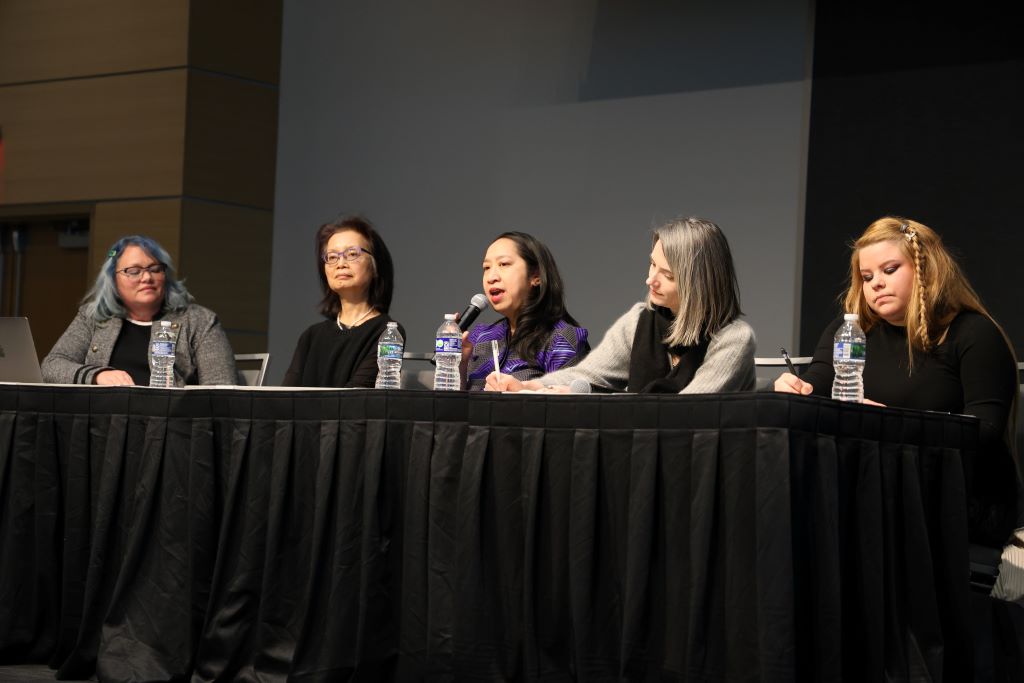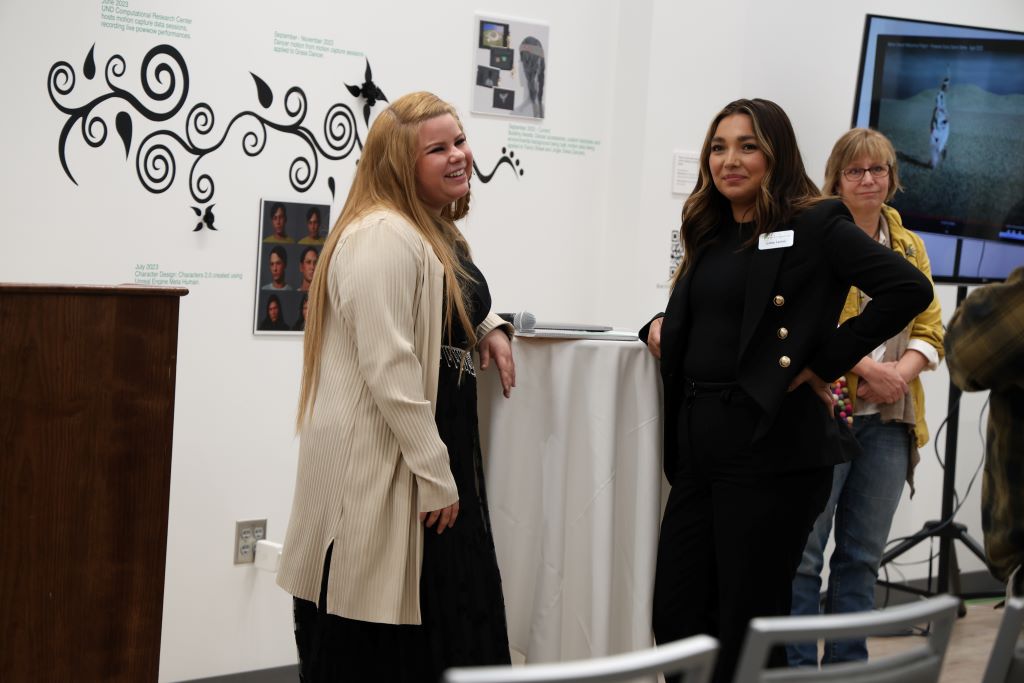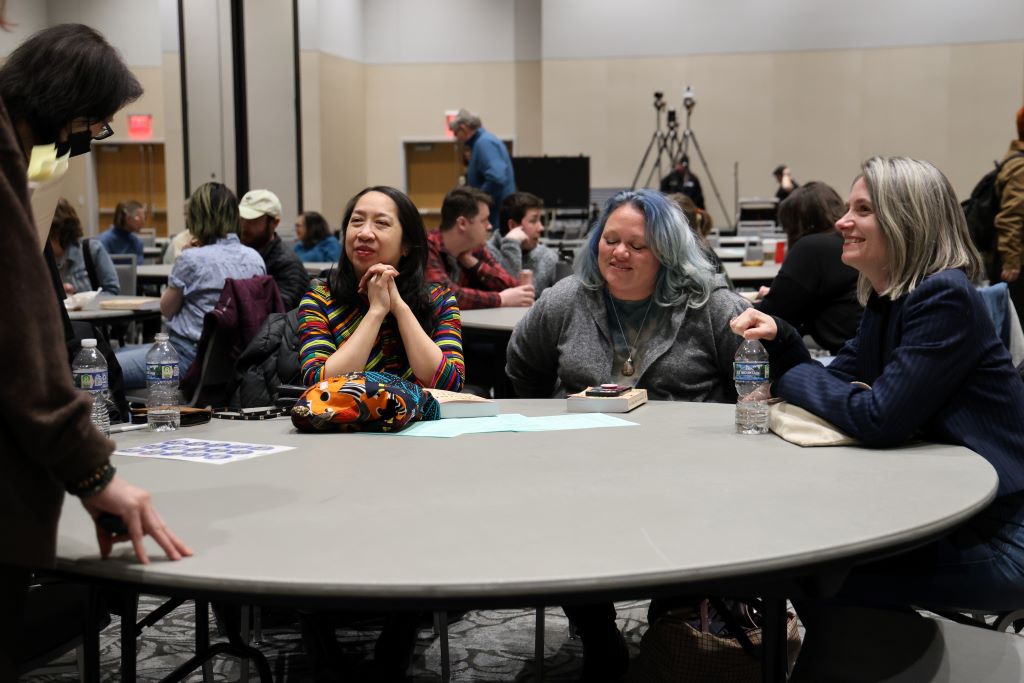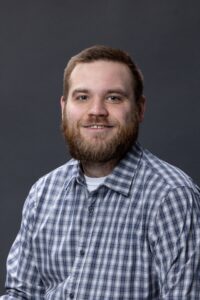Literature and legacy at 55th Annual Writers Conference
55th Annual Writers Conference celebrates the closing of one chapter, beginning of another

The Writers Conference, celebrating its 55th anniversary, was held at the Memorial Union on March 20-22. Six authors and artists visited campus to discuss life, art and literature, including Ava Chin, Terrance Hayes, Sterling HolyWhiteMountain, Marie Myung-Ok Lee, Laura Marris, and Ariann Rousu.
Following its half-century legacy, most Grand Forks bibliophiles have at least one Writers Conference memory. With a dedicated audience that returns year after year, the conference still attracts crowds online and in person.
This partially can be attributed to the conference’s dedication to being open and accessible to the public, which is only more true now that anyone in the world can hop on via Zoom.
A look at past authors reveals another reason that the conference has such a fervent following. Authors such as Truman Capote, Salman Rushdie and, more recently, Colson Whitehead all have trekked up north to attend the conference.
Crystal Alberts, professor of English and longtime director of the Writers Conference, and this year’s conference co-director, said that, along with its dedicated patrons, the conference’s momentum is the key to its longevity.
“If the authors have a good experience here, they talk about it elsewhere, and people will look at the list of people who we’ve had and think, ‘I want to be part of that,’” she said. “It’s that momentum that keeps the tradition going. It’s kind of like a sourdough starter. You have to feed it new things. Otherwise, it doesn’t survive.”
Sterling HolyWhiteMountain, for example, was recommended to Alberts by David Treuer, who has attended the conference twice. Poet Terrance Hayes was a teacher of Hanif Abdurraqib, a writer who participated in the conference in 2022. These connections have cropped up throughout Alberts’ 15-year tenure as conference director, she said.
“There are a lot of convergences. It’s just a constant interconnected influence, and it carries forward. It’s one of the qualities that makes the conference so special.”
Some crowd-favorite events such as the lively panels where authors engage in intellectual discourse and speak candidly about their processes and relationships to art are evidence of the kind of magic that can happen when you gather brilliant minds to discuss their craft, and this year was no exception.
“I feel like the group we invited this year has been amazing,” Alberts said. “A lot of them are here for extended stays, which means there’s been a lot of overlap and they’ve had the chance to interact. Sometimes conferences can feel disjointed when people are coming in and out, but there’s a sense of camaraderie with this group, and the vibe of the conference changes when that happens.”

A standout presentation came from Ariann Rousu, a UND graduate and employee whose synthesis of tradition and cutting-edge technology grabbed the audience’s attention on Wednesday.
Rousu, a 2022 fine arts graduate, currently serves as a 3D tech and Native heritage artist at the Computational Research Center. Her exhibition in the Memorial Union Gallery featured vibrant paintings of Native American women lining the walls, with a VR headset showcasing the main attraction at the front of the exhibit.
At the Computational Research Lab, Rousu is developing a video game called the “Native Dancer Project.” The game is currently a VR demo of a Native American dancer in full regalia performing the grass dance in an open field.
The game render on display was visually striking. Rousu used motion capture suits and live music to authentically portray the rhythm and movement of the dancer. Its striking quality reflects Rousu’s careful attention to detail, down to the physics of the fabric the regalia is made from.
For example, Rousu likened programming the jingle dress to crafting a physical dress. Each pattern and texture “sewn” individually, down to the placement of the jingles.
“It’s a process,” she said. “I’m placing each jingle meticulously on the dress.”
Rousu said the project, a collaboration between UND and the Tribal Nations Research Group, will be a rhythm game similar to “Dance Dance Revolution” and initially was conceived as a diabetes intervention tool. The idea has been gestating for almost 20 years and, now that technology has made it possible, Rousu is excited to share Native American culture in a new way.
In addition to the completed project becoming a competitive game and means of cultural preservation, Rousu said they hope to train people in Native communities in programming and AI.
“That’s something that I really love about the project. I look at it as a potential way of preserving these dances and culture,” she said.

Marie Myung-Ok Lee’s Thursday night reading gave an insightful, behind-the-scenes overview of her novel, “The Evening Hero.”
Lee, raised in Hibbing, Minn., to two North Korean immigrants, read excerpts from her newest novel, which was 18 years in the making. “The Evening Hero” blends a satirical skewering of medicine’s increased commercialization with a historical epic about the Korean War and was partially inspired by her parents’ experiences.
Readings are a staple of the Writers Conference for obvious reasons, but there is something special about hearing an author’s words from their voice. Lee’s excerpt readings were humorous and harrowing, and the author’s voice provided extra authenticity to the words.
Among the highlights of her discussion was the revelation that a trip to North Korea was a part of her research.
“That was when Kim Jong Il was doing a lot of testing of the Taepodong missiles, and those two young women had gotten arrested for sneaking in two journalists. The president of Brown University said, ‘You probably shouldn’t go,’” she recalled. “So, as I tend to do, I took my mother with me, too!”

At Lee’s reading, Provost Eric Link announced that, after 15 years, Professor Crystal Alberts will leave her role as director of the Writers Conference to focus on UND’s collaboration with North Dakota Tribal College on a $1 million Mellon Foundation Grant.
“It’s a kind of grief,” Alberts said the following day. “I’ve had a number of months to go through the mourning process, and I’ve reached the acceptance stage.”
Despite this, Alberts says she’s excited to move forward.
“One of the reasons that I’m stepping away — besides 15 years being long enough — is that the conference is its own thing. It’s a living tradition that shouldn’t be identified with a single person other than, of course, John Little,” she said, referring to the conference’s founder.
Creative Writing Assistant Professor Patrick Henry, who has helped with the Writers Conference in various capacities since arriving at UND seven years ago, as well as serving as co-director for this year’s conference, will assume the director role moving forward.
“It’s a tremendous opportunity, and it’s also a very humbling opportunity,” Henry said. “I do feel a tremendous obligation to live up to the contributions that Crystal and all of the previous directors have given to the conference.”
Henry has ideas to make the 56th annual conference meaningful for students and other attendees. For instance, he said he plans to make structural changes to involve more faculty in the planning and creative decisions.
“We’re talking about the ways that art is part of our lived experience and the way that art lets us navigate and think from a range of complex angles about all the work we do here at UND,” he said. “That’s something I want to continue and, for me, part of the inspiration behind that is to have some other folks that we can bounce ideas off. It’s really going to support that interdisciplinary spirit.”
Drawing from Albert’s sourdough bread analogy, Henry is poised to inject the conference with fresh culture and help it rise for years to come.



